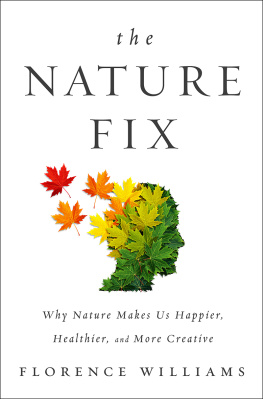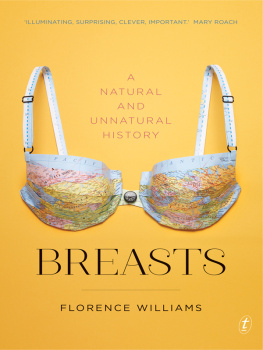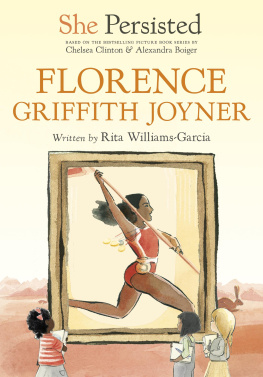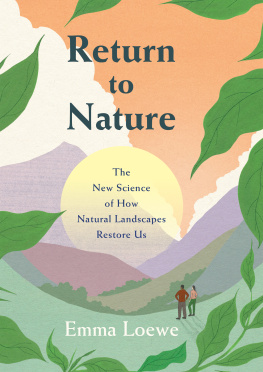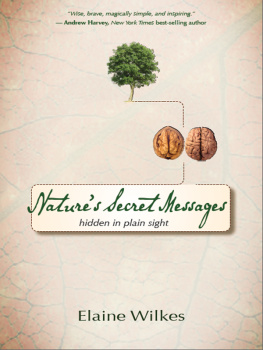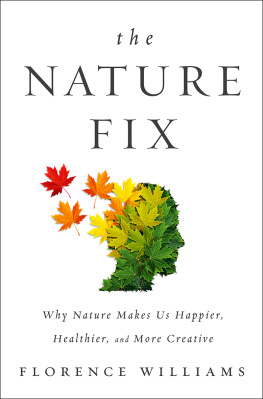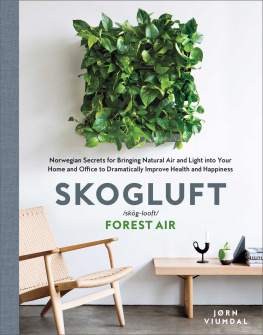

To my father, John Skelton Williams, for showing me the
natural world in the first place. You always
made it magical.
THE
Nature
Fix
Copyright 2017 by Florence Williams
All rights reserved
First Edition
For information about permission to reproduce selections from this book,
write to Permissions, W. W. Norton & Company, Inc.,
500 Fifth Avenue, New York, NY 10110
For information about special discounts for bulk purchases, please contact
W. W. Norton Special Sales at specialsales@wwnorton.com or 800-233-4830
Book design by Chris Welch
Production manager: Julia Druskin
JACKET DESIGN BY PETE GARCEAU
JACKET IMAGE SHUTTERSTOCK / LIGHTSPRING
The Library of Congress has cataloged the printed edition as follows:
Names: Williams, Florence, 1967- author.
Title: The nature fix : why nature makes us happier, healthier, and more creative /
Florence Williams.
Description: First edition. | New York : W.W. Norton & Company, Independent
Publishers Since 1923, [2017] | Includes bibliographical references.
Identifiers: LCCN 2016040709 | ISBN 9780393242713 (hardcover)
Subjects: LCSH: NaturePsychological aspects. | Environmental psychology. |
Creative ability.
Classification: LCC BF353.5.N37 W55 2017 | DDC 155.9dc23
LC record available at https://lccn.loc.gov/2016040709
ISBN 978-0-393-24272-0 (e-book)
W. W. Norton & Company, Inc.
500 Fifth Avenue, New York, N.Y. 10110
www.wwnorton.com
W. W. Norton & Company Ltd.
15 Carlisle Street, London W1D 3BS
But are not exercise and the open air within the reach of us all?
WALT WHITMAN
I f theres one major theme of this book, its that the benefits of nature work along a dose curve. Tim Beatley, who runs the Biophilic Cities Project at the University of Virginia, promotes a concept called the nature pyramid. Its a recommended menu for getting the nature humans need, and I think its a genius idea. It also happens to mirror the structure of this book, from quick doses of nearby nature to longer spells in wild places. Inspired by the ubiquitous food pyramid, Beatley places at the base the daily interactions with nearby nature that help us destress, find focus and lighten our mental fatigue. These are the birds and trees and fountains in our neighborhoods, our pets and our house plants, public and private architecture that allow for daylight, fresh air and patches of blue sky and naturalistic landscaping. These are our daily vegetables, and Singapore, laser lights and all, has it nailed. We should all be so lucky.
Moving up the pyramid are weekly outings to parks and waterways, places where the sounds and hassles of the city recede, places that we should aim to imbibe at least an hour or so a week in the Finnish fashion. These might include wilder, bigger city parks if were lucky, or regional parks that we can travel to fairly easily.
Moving up higher still are the places that take more effort to get to: the monthly excursions to forests or other restful, escapist natural areas along the lines of what Japans Qing Li recommendsa weekend per monthfor our immune systems.
At the very pinnacle are the rare but essential doses of wilderness, which Beatley and scientists like Utahs David Strayer think we need yearly or biyearly, in intense multiday bursts. As weve seen, these trips can rearrange our very core, catalyzing our hopes and dreams, filling us with awe and human connection and offering a reassurance of our place in the universe. There may be particular times when wilderness experience can be most helpful to us, such as during the identity-forming roller coaster of adolescence or following grief or trauma.
The more we recognize these innate human needs, the more we stand to gain. Id love to see more wilderness therapy, more kids in summer camp and on nature field trips and on scouting expeditions and on quests of one kind or another, and more opportunities for city populations in general to touch the wild. We all need a regular check-in for personal introspection, goal-setting and spiritual reflection. Best to turn the phone off.
Distilling what I learned, I came up with a kind of ultrasimple coda: Go outside, often, sometimes in wild places. Bring friends or not. Breathe.
According to Beatley, theres cause for hope. Cities around the world are undertaking projects large and small to integrate a range of natural elements into everyday life, and theyre seeing huge payback, from New Yorks High Line to the opening up that we saw of South Koreas Cheonggyecheon River. When cities become greener, it makes not only people more resilient but the cities themselves. They can better handle extremes of moisture and temperature; they rebound more quickly from natural disasters and they provide refugia for disappearing species from bees to butterflies to birds and fish.
Since our brains especially love water, it makes sense to put it at the heart of these projects. Thirty-two miles of the Los Angeles River are being transformed from a concrete-lined eyesore into a biological and recreational corridor. Copenhagen now has several safe swimming areas in the harbor. People swim in organized events from San Franciscos Baker Beach to Alcatraz. Washington, D.C.s Anacostia River, once a forgotten, crime-ridden excuse for sewage, now hosts Friday Night Fishing for families and canoe trips for schoolchildren. But try topping this: Wellington, New Zealand, offers a public snorkel trail. Such places exemplify, said Beatley, cities of awe. But the challenge remains to make blue space, whether awesome or merely restorative, accessible to everyone.
We still have a long way to go. You can see poverty from space. My own city, D.C., has a clear tree line that can be seen in satellite photos analyzed by the Washington Post. To the west of that line, in the affluent Northwest quadrant, the streets glow green from above. To the east, where 40 percent of residents live in low-income neighborhoods, the area looks flat and gray. The picture is hardly unique, and this inequality is our essential conundrum as we move toward increasingly urban habitats.
Olmsted understood that throughout historyfrom the ancient Persians to the English gentry, whose manicured hunting grounds first inspired city parksthe rich always got to enjoy restful glades and pastures. Olmsted wanted to break that pattern fundamentally. Not only did he want people to heal in parks; he wanted all people to have the chance. In the 1870s, he actually posted notices in tenements and sent circulars to all the doctors in New York City with directions to Central Park and Prospect Park; the posters included a description of natural destinations to aid convalescents.
Why shouldnt doctors prescribe time outside to their patients?
Its taken nearly 150 years for Olmsteds idea to gain some traction. There arent many doctors sending their urban patients to the park, but there are a few. Nooshin Razani, a pediatrician at Childrens Hospital in Oakland, California, has forged a partnership with local parks so inner-city kids can get to them more easily and more often. Like Razani, Robert Zarr, a pediatrician at Unity Healthcare in Washington, D.C., saw that conventional approaches werent serving his underprivileged patients. Many were suffering from obesity, diabetes, depression, anxiety and asthma.
This is a no-brainer, he said. Parks are free. They are an incredible resource not being used. We just need to connect people to them.
Health care is only a piece of the solution. The access-to-nature movement also ideally needs to grow out of schools, churches, workspaces, neighborhood associations and cities as a whole. And it wont happen unless we acknowledge more consciously our need for nature. As Ive learned through the course of reporting this book, we profoundly undervalue that need. You can see it when we cut recess and outdoor play for kids, when we design buildings and neighborhoods that cut off light, space and fresh air, when we stay inside instead of making the effort to get out. The wealthier you are, the more likely you are to satisfy your nature neurons, but its often a subconscious fulfillment met by exclusive neighborhoods and restorative vacations. Until we all fully acknowledge the need for nature thats driving some of our behavior, we wont work to make it available for everyone.
Next page
